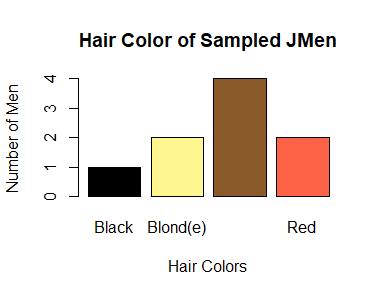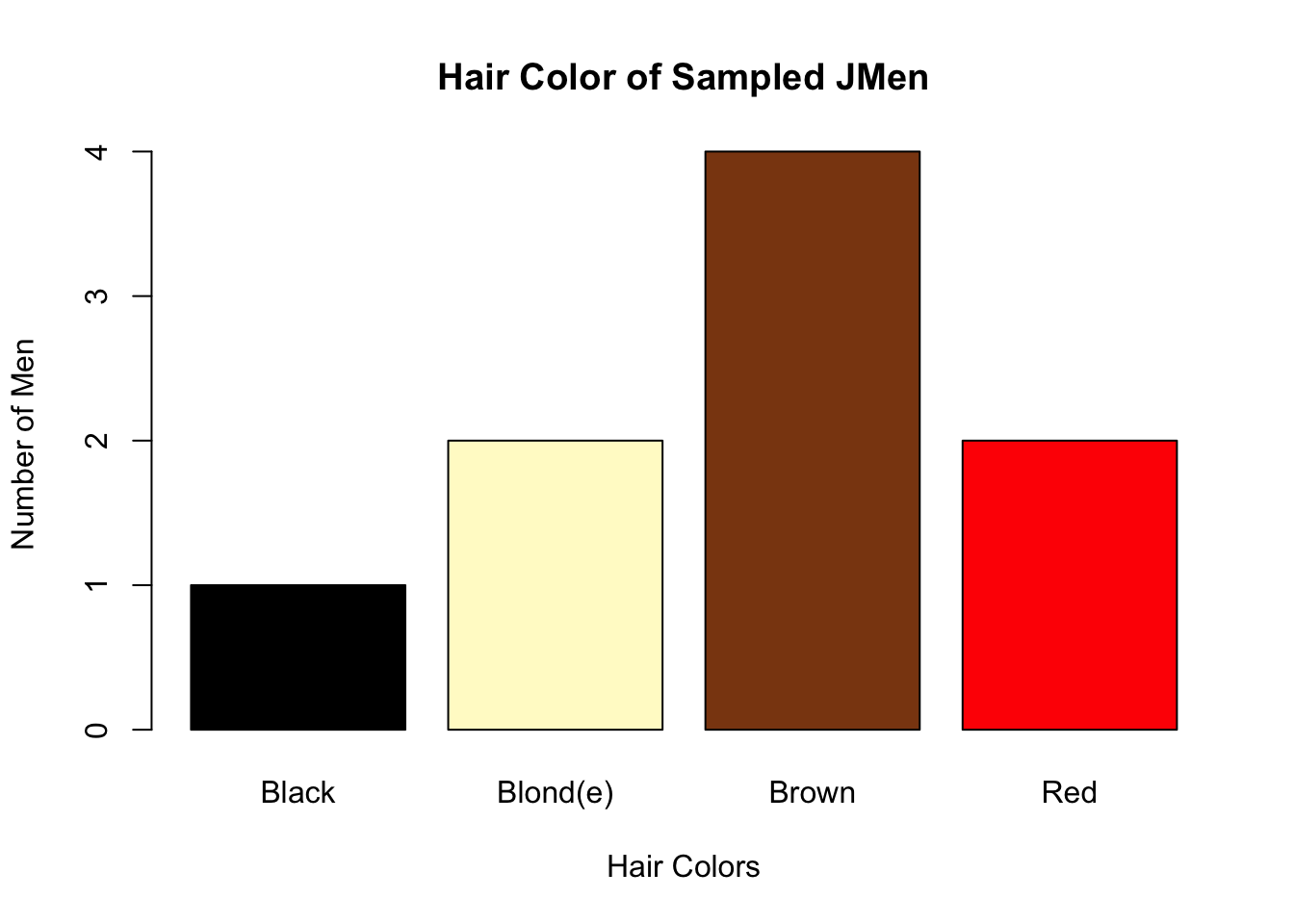My First Markdown Document
Eva Koplow
January 18, 2019
Target Graph

Target Graph
Data Entry
## Name Age Eyes Hair
## 1 John 32 Blue Brown
## 2 Jim 39 Green Red
## 3 Jamal 48 Brown Blond
## 4 Johan 21 Blue Blond
## 5 Julio 50 Green Brown
## 6 Julian 9 Brown Brown
## 7 Jabril 83 Blue Black
## 8 Jamie 10 Brown Red
## 9 Joachim 12 Blue BrownImitation Graph

I was able to imitate the original graph by creating a new table with the hair colors and then using the barplot tool with that new table. I tried out some new colors to try to find similar matches to the original graph. I used the simpler eye color barplot graph as a guide but added to it since this graph has 4 bars instead of 3. The only thing that might be a little off is that the yellow I have is slightly different and the font size might be slightly different.
Eye_table <- table(jmen$Eyes)
barplot(Eye_table, main = "Eye Color of Sampled JMen", xlab="Eye Colors", ylab="Number of Men", names.arg = c("Blue", "Green", "Brown"))
Eye_table <- table(jmen$Eyes)
barplot(Eye_table, col = c("blue", "Green", "saddlebrown"), main = "Eye Color of Sampled JMen", xlab="Eye Colors", ylab="Number of Men", names.arg = c("Blue", "Green", "Brown")) ```
```
The goal of the analysis was to create a series of bar charts displaying the relative numbers of men with different hair or eye colors from the data set. The data used was a table with different men and their corresponding age, eye color, and hair color. The graphs were made using the barplot function and the first one was meant to exactly replicate a given image. The data visualizations show that blue eyes and brown eyes were the most popular within the sample.